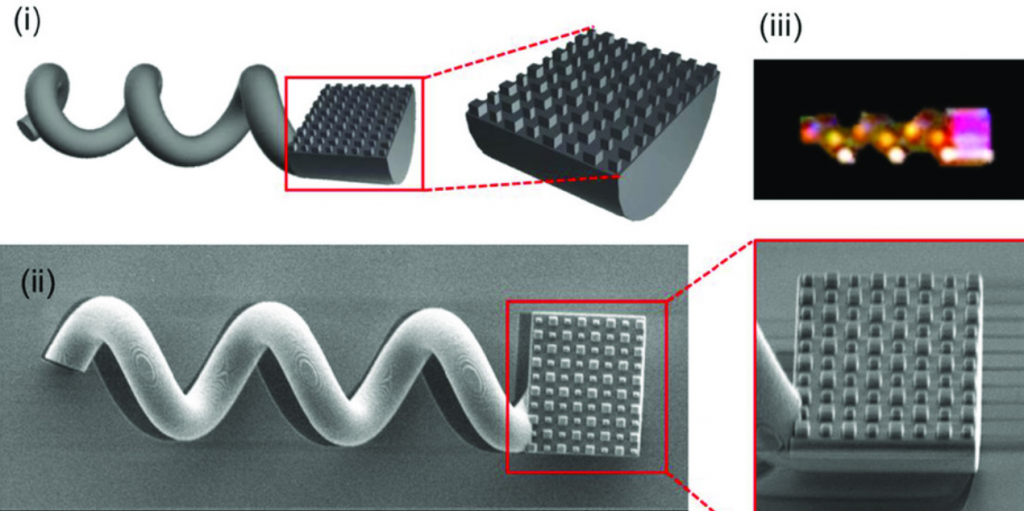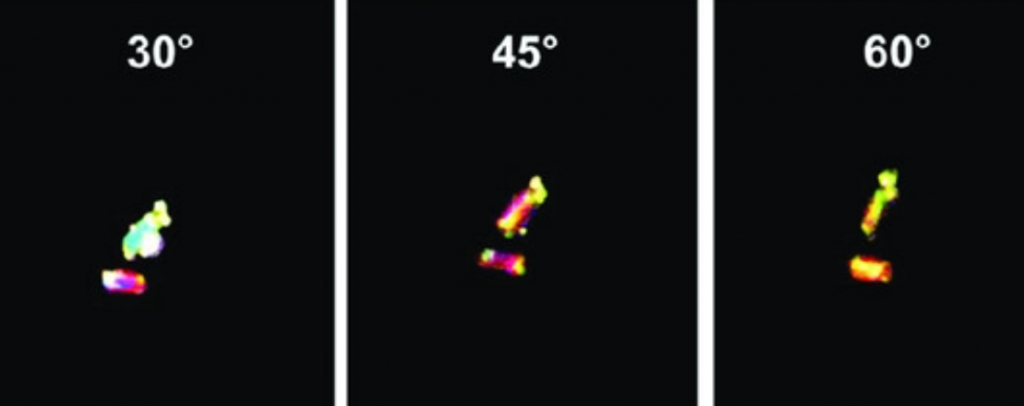Researchers from Purdue University’s School of Mechanical Engineering have published a new study detailing the development of trackable 3D printed microrobots. The research team’s novel method of patterning the microrobots is expected to make them suitable for biomedical applications such as non-invasive diagnosis and drug delivery, where individual tracking is key.

It’s all about size
Microrobots are typically limited in their applications due to their inherently small size (less than 1mm). Internal actuation and wireless control systems can only shrink so much before they lose their functionality, but there are ways around this with external magnetic fields.
The real challenge with microrobots is the difficulty in tracking them once they’re in-vivo or in-vitro. 3D printed microrobots have previously been colored after fabrication for tracking purposes but these colors tend to fade over time. Surfaces are marked with fluorescent materials such as quantum dots or fluorophores, but operation time is limited due to wear. The Purdue University study proposes a method of coloring microrobots during 3D printing for a more permanent result.
Two-photon polymerization
The research team employed two-photon polymerization (TPP) to 3D print the microrobots, an additive manufacturing method that works on the same premise as SLA but in the nano- and micro-range. The microrobots’ body structures are scaled-down but mimic those of beetles and butterflies in that they are color-expressing prisms under visible light. In this particular study, the structural blocks of the microrobots were approximately 1 micron across, although this can be scaled up or down depending on the size of the system. For distinct color responses under visible light, the structural blocks were coated in germanium and nickel.
The researchers tilted the structural blocks at angles of 30°, 45°, and 60°. They were seen to express varying colors and contrasts on the RGB spectrum depending on their orientation in respect to a central white light source. This led the researchers to conclude that these expressed colors provided a permanent qualitative metric for visually locating and tracking individual microrobots, as the colors did not fade over the course of the experiment. With some structural fine-tuning and extensive data collection, the location and orientation of the microrobots in the XYZ planes could be precisely tracked just by observing the colors expressed.

The results of the study validate the Purdue researchers’ method of integrating color-based identification features directly into the local structure of microrobot bodies. With further work, sophisticated real-time tracking using color sensitive algorithms could be developed for actual medical applications, although in-vivo use is still expected to be decades away.
Further findings can be found in the study titled ‘3D‐Printed Microrobots with Integrated Structural Color for Identification and Tracking’. It is published in the journal Advanced Intelligent Systems. The paper is co-authored by Cara Koepele, Maria Guix, Chenghao Bi, Georges Adam, and David Cappelleri.
As 3D printing technology has advanced over the years, scientists around the world have attempted to fabricate microrobots for a number of applications. Researchers from the City University of Hong Kong have previously 3D printed microrobot carriers which transport cells within living organisms for targeted therapy and tissue regeneration. Elsewhere, researchers at Georgia Institute of Technology have 3D printed micro-bristle-bots that can be controlled by minute vibrations, making them capable of detecting changes in the environment. The bots are to be further developed for applications in electronics and mechanics.
The nominations for the 2020 3D Printing Industry Awards are now open. Who do you think should make the shortlists for this year’s show? Have your say now.
Subscribe to the 3D Printing Industry newsletter for the latest news in additive manufacturing. You can also stay connected by following us on Twitter and liking us on Facebook.
Looking for a career in additive manufacturing? Visit 3D Printing Jobs for a selection of roles in the industry.
Featured image shows the 3D printed microrobots with color-expressing blocks. Image via Purdue University.



